You are here
Petroglyphs of Serektas.
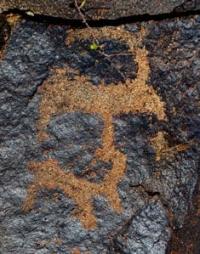
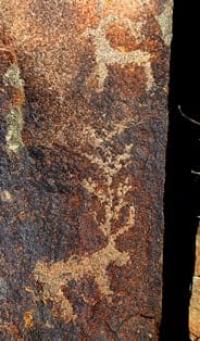
Petroglyphs of Bronze Age in Kazakhstan.
"A jumble of basalt blocks
leaned over the stormy river.
On the rocks - an ocher painting
written by an ancient hand"
Peter Korytko.
Petroglyphs of Bronze Age in Kazakhstan.
Serektas petroglyphs are located at an altitude of 752 to 840 meters above sea level, located in central part of mountains of same name, which are located between Karakyr mountains in west and low mountain ranges: Saganbek in east, Kazybek and Karashoky in northeast, 125 kilometers northwest of Almaty, 18 kilometers northeast of village of Karabastau, 51 kilometers west and slightly north of village of Kurty and 17 kilometers northeast of Tamgaly rock paintings in Zhambyl region in western part of Almaty region.
In the Serektas Mountains, one Late Bronze Age settlement is known, partially studied by excavations and located on the southern slope of the main Serektas massif, on the right bank of the river. Here only 3-4 planes with insignificant petroglyphs of the Bronze Age were discovered.
Much more common here are nomadic sites dating from the turn of the century AD. up to the XXth century inclusive. Near one of the sites of the “Usun” period (excavations by A.N. Maryashev and S.A. Potapov), many drawings from different times were carved into the rock, including early Iron, Middle Ages, as well as autograph inscriptions of Arabic graphics and petroglyphs: images of yurts and stationary dwellings with doors and windows, similar to the buildings on the winter roads of the Kazakhs of the XIXth – early XXth centuries.
These petroglyphs reflect the circumstances not only of the final stage of settlement of Kazakh clans in Semirechye. In the Serektas Mountains, the petroglyphs are somewhat different both in technique and in the color of the patina “... images of yurts.”
Consequently, they were applied much later, in the late Middle Ages. In the images, rectangles are visible, the entrance to the yurt, window openings are observed in the middle, and lines reminiscent of steps are drawn at the entrance. Perhaps these structures are not just yurts, but early architectural, adobe dwellings of nomads, resembling a yurt in plan.
At one of the points, on the rock above the ruins of a site of the same period, along with the common tribal tamga Shapyrashty (tumar), Arabic personal graphics are twice engraved: the inscription “Malybai Kilbayuly” and the date “1869”. In the list of owners of yurts in the Kurtinsky volost of the Vernensky district for 1871, Maldybai, the son of Kiilibai Dzhanakin (Dzhanakhanova), is listed in aul No. 3, which consisted of a Shapyrashty of the Asyl clan of the Azhik and Keni departments.
Together with his father, he owned 400 rams, 54 horses and 8 camels. The name of the wealthy and active Maldybai Kiylibaev is repeatedly found in other documents, from which it follows that already in 1879 he was elected volost manager of the Kurtinsky volost, and his father was the elder of his native village No. 3.
However, from the same documents it follows that Maldybai was illiterate and instead of a personal signature he put only the family tamga-tumar, so the inscription and the date of establishment of the wintering camp in Serektas were probably stamped by someone on behalf of the customer.
Near the inscriptions and the wintering quarters of the volost administrator, the ruins of a large stone building of a mosque (?) have been preserved, next to which there are prayer inscriptions and autographs on five stones, one of which dates back to 1916.
History of research of Serektas petroglyphs.
Petroglyphs in the Serektas Mountains were first discovered by N.N. Pantusov in the very first archaeological exploration expedition in history to the Chu-Ili Mountains in 1897. In 1992, in the Serektas Mountains area, archaeologist A.E. Rogozhinsky and geologist B.Zh. Aubekerov conducted reconnaissance, which revealed on the right bank of the Serektas River several small clusters of petroglyphs and ancient inscriptions, sites and burial grounds of different eras.
In 2000 - 2001, in the Serektas Mountains area, an archaeological and geological group led by B.Zh. Aubekerov and R. Sala also discovered a number of petroglyph locations and a Bronze Age settlement, sites of the early Iron Age and modern times; the study of petroglyphs and excavations at settlements were carried out by A.N. Maryashev, A.S. Ermolaeva, S.A. Potapov.
In 2007, in the upper reaches of the Serektas River, on a rock above the ruins of a XIXth century settlement, A.E. Rogozhinsky discovered embossed inscriptions of Arabic script and tamga of the Tumar type of the Shapyrashty tribe of the Senior Zhuz with the date “1869”.
The inscriptions contain the name of Malybai Kilbaiuly, who was in the last third of the XIXth century in village No. 3 of the Kurtinsky volost, and then the manager of the same volost. 0.5 kilometers from this wintering site, the ruins of a large stone building (a mosque from the late XIXth – early XXth centuries) were discovered, near which on the slope of the hill there are five rocky planes with inscriptions in Arabic script.
Geographic coordinates of Serektas petroglyphs: N43°54'16 E75°41'23
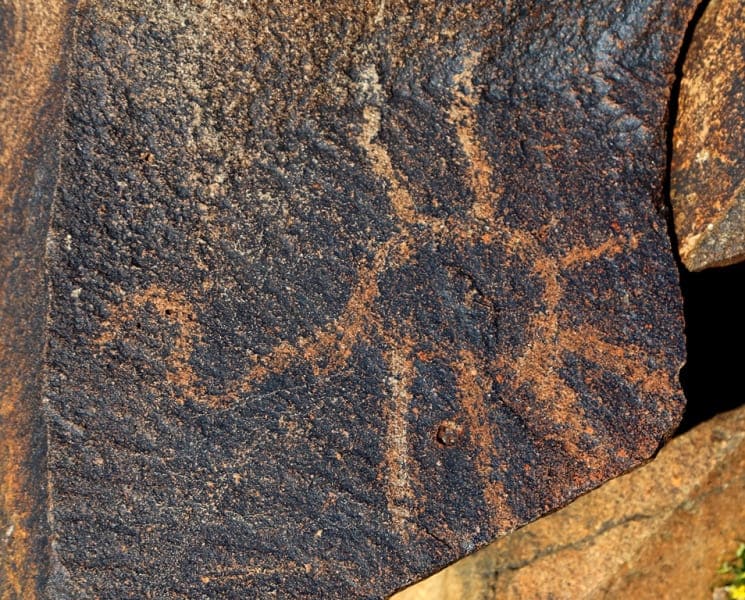
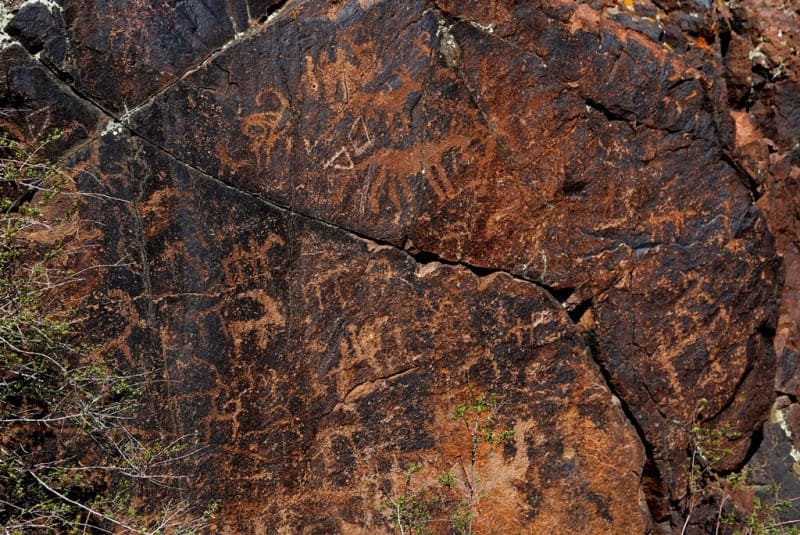
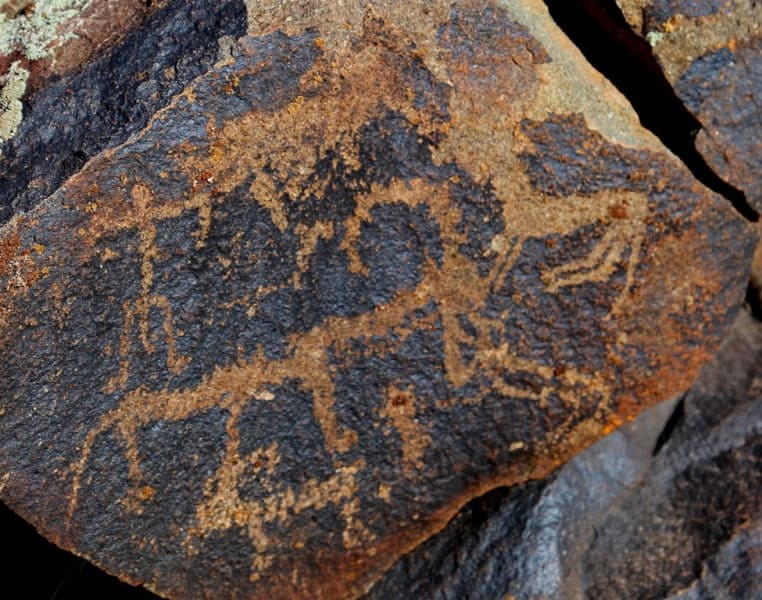
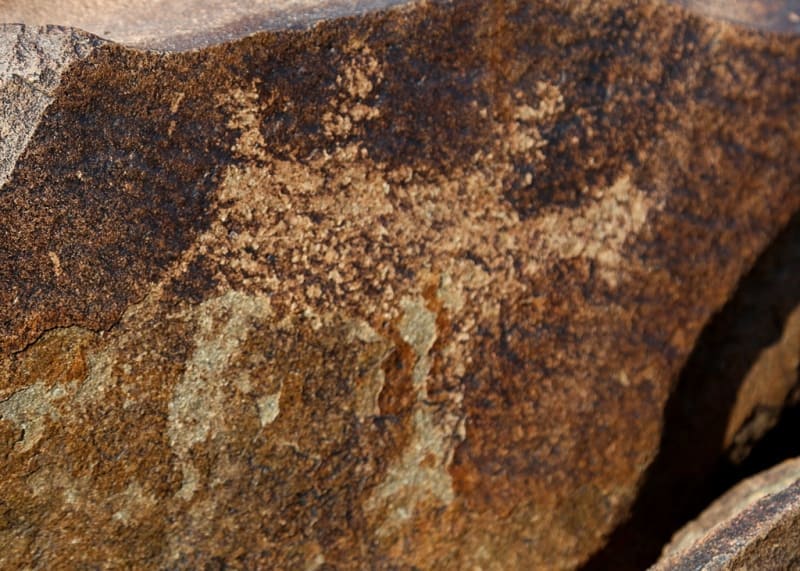
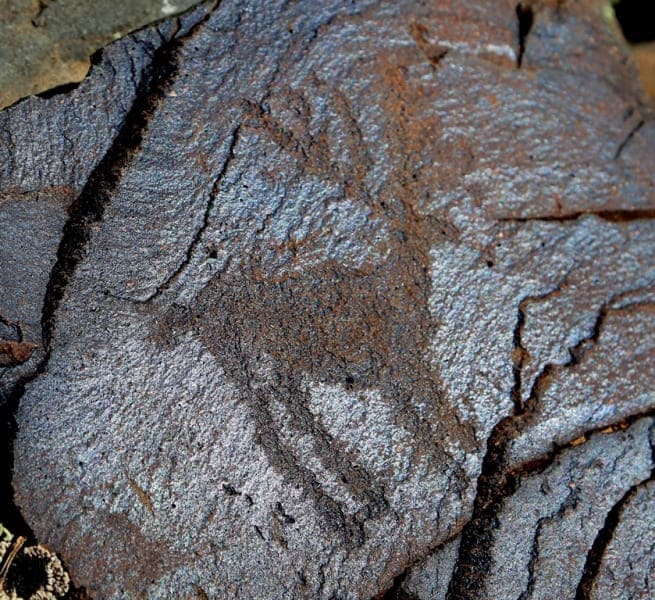

Authority:
Maryashev A.N., Goryachev A.A. Rock art of Semirechye. Almaty. 2002
Rogozhinsky A.E. Tamga Tamgaly. Antiquities of Zhetysu. Archeological monuments of Zhambyl region. Almaty, 2016. Pp. 161 – 174.
Photos by:
Alexander Petrov.







